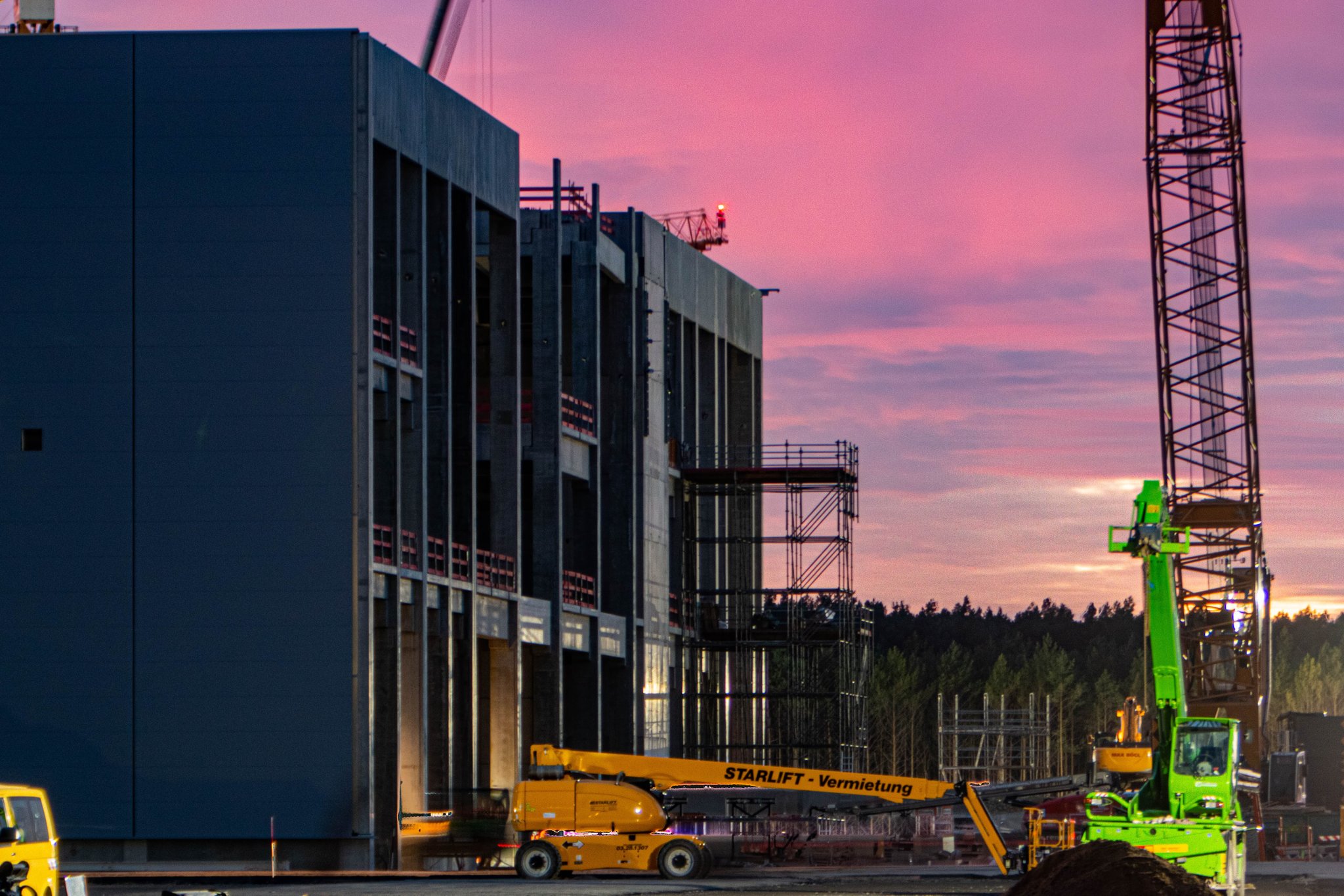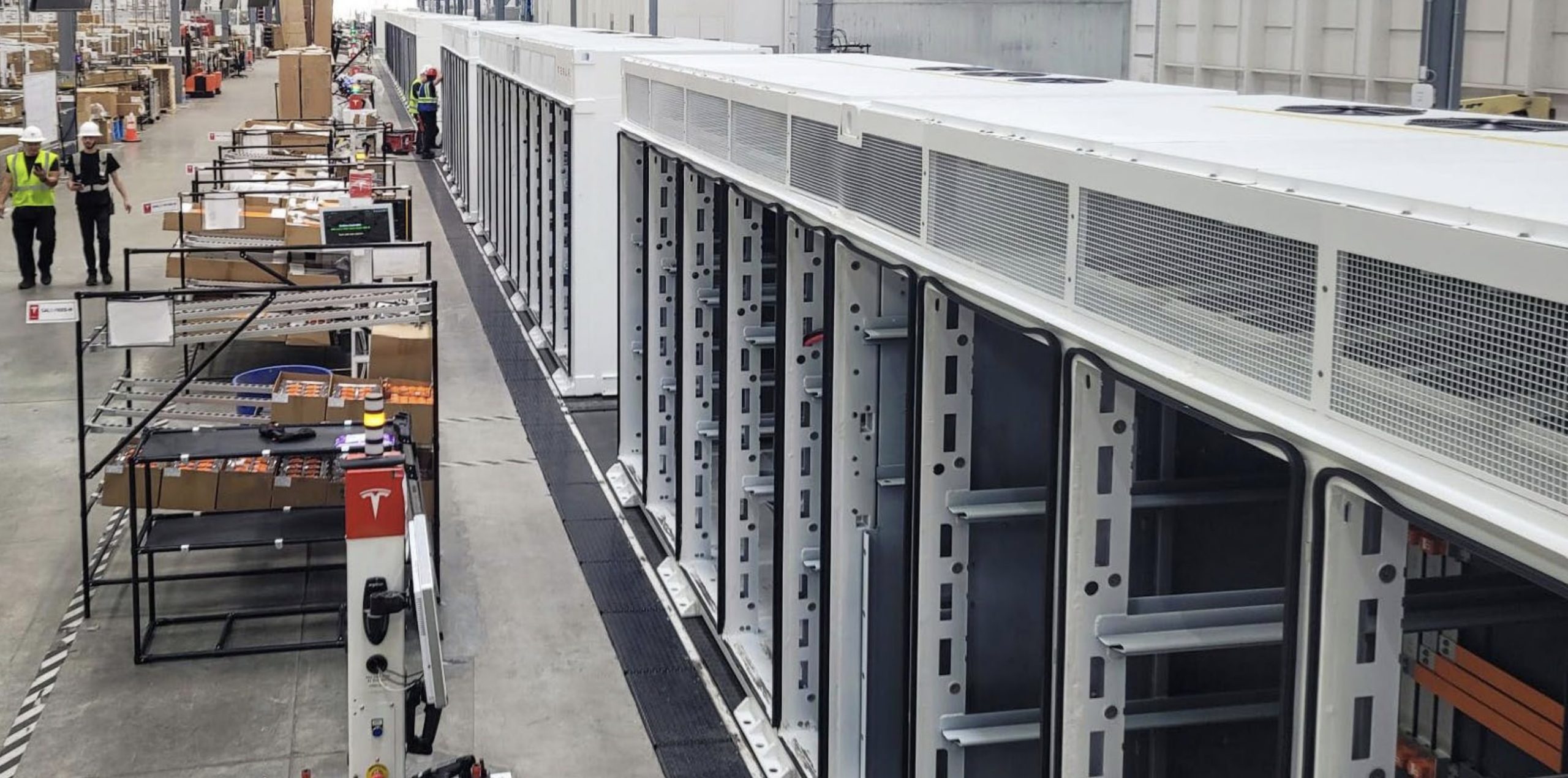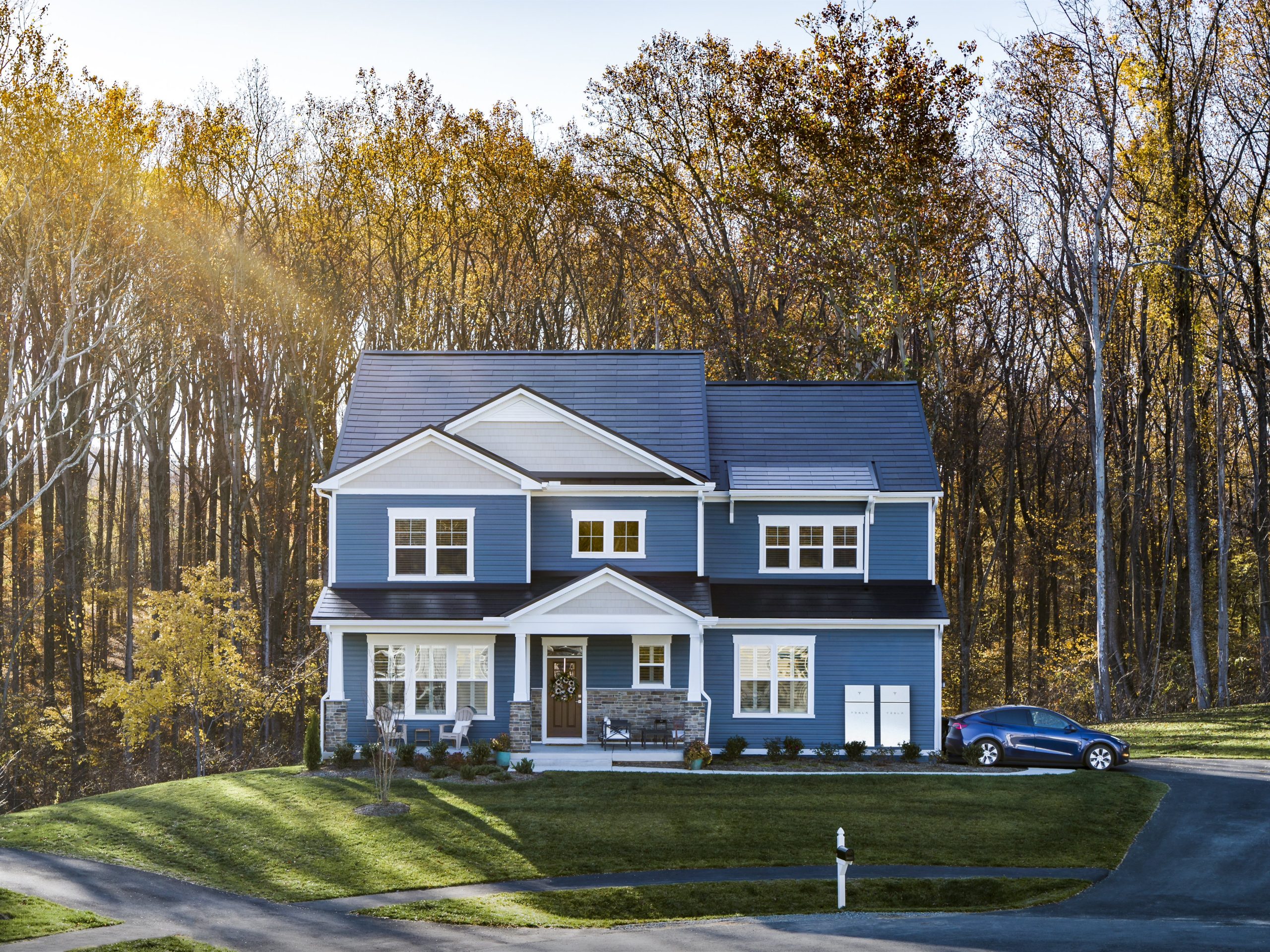Tesla Giga Berlin is the electric automaker’s first European production facility, and it is slated to begin production of the Model Y crossover later this year. However, reports out of Germany indicate that Tesla’s German EV manufacturing facility is poised to be delayed six months due to numerous constraints that deal with battery pack output. However, Brandenburg Economic Minister Jörg Steinbach, who has been one of Tesla’s most vocal supporters in their quest to open the German facility, isn’t buying the six-month delay story at all. Steinbach still believes Tesla is on pace for a late-Summer or early-Autumn start at Giga Berlin.
The delays at Giga Berlin are not unfamiliar territory for those who have been following the site’s development over the past 18 months. After being announced by Elon Musk in late 2019, Tesla started land preparations in January 2020, only to begin erecting the mainframe of the facility just a few months later. The site has been subjected to numerous short-term delays due to the COVID-19 pandemic and some application holdups that needed preliminary approval before Tesla could move forward. However, recent reports from Germany suggest a more long-term delay is in store for Tesla because battery pack output won’t allow for vehicle production.
“I don’t have the faintest idea of how anyone can come up with a six-month delay. If nothing happens out of the ordinary, I still expect a start of production in late Summer or Early Autumn.”
-Jörg Steinbach, German Economic Minister, State of Brandenburg
Many outlets have cited Automobilwoche’s story that says the German manufacturing plant won’t become operational until January 2022. The article indicates that company circles close to Elon Musk state the CEO is accepting the January 2022 date, even though just last week during the Q1 2021 Earnings Call, Musk said that limited production would occur at both Giga Berlin and Giga Texas this year.
Musk said:
“We’re building factories as quickly as we can. Both Texas and Berlin are progressing well, and we expect to have initial limited production from those factories this year and volume production from Texas and Berlin next year.”
(Credit: @gigafactory_4)
Steinbach not buying Giga Berlin delay stories
Now that the report has been in the loop for a few days, plenty of people are finding out that Giga Berlin is apparently facing the six-month delay. One of the people disagreeing with those reports is Brandenburg Economic Minister Jörg Steinbach, a well-known politician who has been ecstatic regarding Tesla’s entry into the German economy. Steinbach told Teslarati earlier today that he doesn’t know where the six-month delay rumors are culminating from. Still, he expects Giga Berlin to face “approximately three months” of delay time.
“I don’t have the faintest idea of how anyone can come up with a six-month delay,” Steinbach said to Teslarati in an interview. “If nothing happens out of the ordinary, I still expect a start of production in late Summer or Early Autumn,” the Economic Minister added.
While Tesla has expressed some frustration with the German approval process, it is not unordinary for things to take several years to earn ultimate approval. Teslarati spoke to German engineer and Tesla enthusiast Alex Voigt last week, who indicated that many projects take 3-5 years to gain ultimate approval.
It appears that the basis of the delays seems to be blamed on a delay in 4680 cell production in Berlin, but the German factory’s battery line was not supposed to support the initial vehicle production efforts in the first place. Tesla’s Kato Road facility in Northern California sits just a stone’s throw away from the Fremont factory where Tesla has manufactured its cars since 2012. This is where Tesla is refining and developing the 4680 battery cell, which differs greatly from the batteries that Tesla currently uses in terms of power and performance, and it will support Tesla’s initial efforts in Berlin, according to Drew Baglino, the company’s Senior VP of Powertrain and Energy Engineering.
“We will incorporate 4680 design solutions into many applications in time across both energy and vehicle and we can use our pilot production facility in Fremont to support the new factory in Berlin as it ramps,” Baglino said during the Q3 2020 Earnings Call.
The delays at Giga Berlin could be confused with something as simple as an extended timeline, as Tesla’s addition of its 4680 battery cell manufacturing line to its application was submitted just last week. The additional portions of the application require more deliberation from regulators.
“If this additional investment now flows into the permit application, it goes without saying that the application documents must be revised, and then the approval authorities have the last word,” Dietmar Woidke, Brandenburg’s Prime Minister, said.
Tesla is still planning for Giga Berlin to begin production and deliveries this year, as it indicated in the most recent Update Letter that timing remains “on track for late 2021. Machinery for paint, stamping, castings, etc., continues to be moved into the building. In the meantime, we will continue to increase import volumes to Europe.”

Energy
Tesla starts hiring efforts for Texas Megafactory
Tesla’s Brookshire site is expected to produce 10,000 Megapacks annually, equal to 40 gigawatt hours of energy storage.

Tesla has officially begun hiring for its new $200 million Megafactory in Brookshire, Texas, a manufacturing hub expected to employ 1,500 people by 2028. The facility, which will build Tesla’s grid-scale Megapack batteries, is part of the company’s growing energy storage footprint.
Tesla’s hiring efforts for the Texas Megafactory are hinted at by the job openings currently active on the company’s Careers website.
Tesla’s Texas Megafactory
Tesla’s Brookshire site is expected to produce 10,000 Megapacks annually, equal to 40 gigawatt hours of energy storage, similar to the Lathrop Megafactory in California. Tesla’s Careers website currently lists over 30 job openings for the site, from engineers, welders, and project managers. Each of the openings is listed for Brookshire, Texas.
The company has leased two buildings in Empire West Business Park, with over $194 million in combined property and equipment investment. Tesla’s agreement with Waller County includes a 60% property tax abatement, contingent on meeting employment benchmarks: 375 jobs by 2026, 750 by 2027, and 1,500 by 2028, as noted in a report from the Houston Business Journal. Tesla is required to employ at least 1,500 workers in the facility through the rest of the 10-year abatement period.
Tesla’s clean energy boom
City officials have stated that Tesla’s arrival marks a turning point for the Texas city, as it highlights a shift from logistics to advanced clean energy manufacturing. Ramiro Bautista from Brookshire’s economic development office, highlighted this in a comment to the Journal.
“(Tesla) has great-paying jobs. Not just that, but the advanced manufacturing (and) clean energy is coming to the area,” he said. “So it’s not just your normal logistics manufacturing. This is advanced manufacturing coming to this area, and this brings a different type of job and investment into the local economy.”
Energy
Tesla and Samsung SDI in talks over new US battery storage deal: report
The update was related by industry sources and initially reported by South Korean news outlets.

Recent reports have suggested that Tesla and Samsung SDI are in talks over a potential partnership to supply batteries for large-scale energy storage systems (ESS).
The update was related by industry sources and initially reported by South Korean news outlets.
ESS batteries to be built at Samsung’s Indiana plant
As noted in a report from Korea JoongAng Daily, the demand for energy storage systems has been growing rapidly in North America, thanks in no small part to the surge in AI investments across numerous companies. With this in mind, Tesla has reportedly approached Samsung SDI about a potential battery supply deal.
The deal is reportedly worth over 3 trillion Korean won (approximately $2.11 billion) and will span three years, according to The Korea Global Economic Daily. A battery supply deal with Samsung SDI could make sense for Tesla as the company already has a grid-scale battery, the Megapack, which is perfect for industrial use. Samsung SDI could simply supply cells for the EV maker.
Production of the batteries would reportedly take place at Samsung SDI’s joint venture factory with Stellantis in Indiana, which is currently under construction. Samsung SDI recently announced plans to use part of that plant’s EV lines to produce cells for ESS, with a targeted capacity of 30 GWh by the end of next year.
Tesla and Samsung’s partnership
At present, only a handful of manufacturers, including Korea’s LG Energy Solution, Samsung SDI, SK On, and Japan’s Panasonic, are capable of producing energy storage-scale batteries domestically in the United States. A Samsung SDI official issued a comment about the matter, stating, “Nothing has been finalized regarding cooperation with Tesla.”
The possible energy storage system deal adds another layer to Tesla’s growing collaboration with Samsung, which is already in line as a partner in the upcoming production of Tesla’s AI5 and AI6 chips. Early sample manufacturing of the AI6 is expected to begin in South Korea, with mass production slated for Samsung’s Texas-based Taylor foundry when it starts operations.
The AI6 chip will power Tesla’s next wave of high-volume projects, including the Optimus humanoid robot and the autonomous Cybercab service. Musk has called the partnership with Samsung a “real collaboration,” adding that he personally plans to “walk the line” at the Taylor facility to speed up progress.
Energy
Tesla VP hints at Solar Roof comeback with Giga New York push
The comments hint at possible renewed life for the Solar Roof program, which has seen years of slow growth since its 2016 unveiling.

Tesla’s long-awaited and way underrated Solar Roof may finally be getting its moment. During the company’s Q3 2025 earnings call, Vice President of Energy Engineering Michael Snyder revealed that production of a new residential solar panel has started at Tesla’s Buffalo, New York facility, with shipments to customers beginning in the first quarter of 2026.
The comments hint at possible renewed life for the Solar Roof program, which has seen years of slow growth since its 2016 unveiling.
Tesla Energy’s strong demand
Responding to an investor question about Tesla’s energy backlog, Snyder said demand for Megapack and Powerwall continues to be “really strong” into next year. He also noted positive customer feedback for the company’s new Megablock product, which is expected to start shipping from Houston in 2026.
“We’re seeing remarkable growth in the demand for AI and data center applications as hyperscalers and utilities have seen the versatility of the Megapack product. It increases reliability and relieves grid constraints,” he said.
Snyder also highlighted a “surge in residential solar demand in the US,” attributing the spike to recent policy changes that incentivize home installations. Tesla expects this trend to continue into 2026, helped by the rollout of a new solar lease product that makes adoption more affordable for homeowners.
Possible Solar Roof revival?
Perhaps the most intriguing part of Snyder’s remarks, however, was Tesla’s move to begin production of its “residential solar panel” in Buffalo, New York. He described the new panels as having “industry-leading aesthetics” and shape performance, language Tesla has used to market its Solar Roof tiles in the past.
“We also began production of our Tesla residential solar panel in our Buffalo factory, and we will be shipping that to customers starting Q1. The panel has industry-leading aesthetics and shape performance and demonstrates our continued commitment to US manufacturing,” Snyder said during the Q3 2025 earnings call.
Snyder did not explicitly name the product, though his reference to aesthetics has fueled speculation that Tesla may finally be preparing a large-scale and serious rollout of its Solar Roof line.
Originally unveiled in 2016, the Solar Roof was intended to transform rooftops into clean energy generators without compromising on design. However, despite early enthusiasm, production and installation volumes have remained limited for years. In 2023, a report from Wood Mackenzie claimed that there were only 3,000 operational Solar Roof installations across the United States at the time, far below forecasts. In response, the official Tesla Energy account on X stated that the report was “incorrect by a large margin.”










